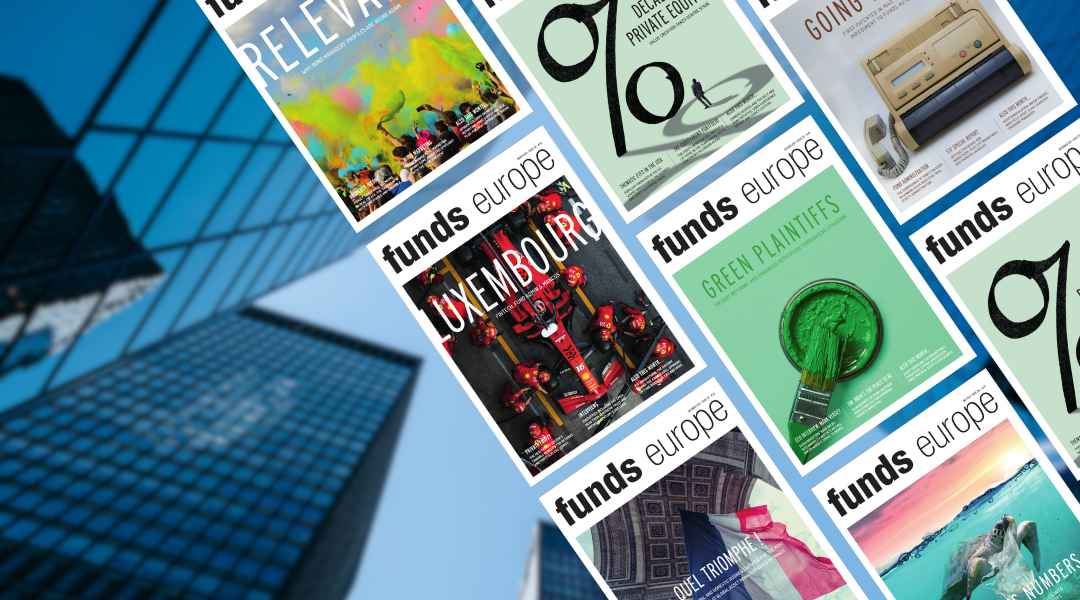 Asset managers aggressively launched RQFII funds but sales have been slow. Lipperâs Xav Feng discusses the key issues: oversupply and limited demand.
Asset managers aggressively launched RQFII funds but sales have been slow. Lipperâs Xav Feng discusses the key issues: oversupply and limited demand.
China unveiled the rules for the Renminbi Qualified Foreign Institutional Investor (RQFII) in December last year, officially launching the programme in Hong Kong.
This enables qualified Hong Kong subsidiaries of China fund management companies and security firms to use their renminbi funds raised in Hong Kong to invest in mainland securities.
However, little progress has been made since the official launch. Responding to the slow market, China announced a further expansion of the QFII and RQFII investment quotas in April, paving a new path for the RQFII programme.
RQFII was supposed to be a big hit with Hong Kong investors and many qualified firms were very aggressive in launching the funds, which give the firms a way to invest their offshore renminbi savings in the mainland financial markets. It is estimated that at least Rmb800 billion have been invested; the authorities in Hong Kong have been very supportive of the programme.
Fallen short
Hong Kong’s Securities and Futures Commission approved 18 funds within 19 days and a total of 21 fund companies were granted a portion of the original Rmb20 billion ($3.2 billion) in the RQFII quota.
Only China Asset Management Company, Harvest Fund Management and E Fund Management have publicly claimed they had met their fundraising targets. Other RQFII product sales have generally fallen short of expectations.
Why has RFQII become such a disappointment? Oversupply and limited demand are the key issues.
Initially, an RQFII fund must contain at least 80% in renminbi debt instruments issued in mainland China and an optional not-more-than 20% in A-shares or other permissible investments – equities with a maximum allocation of up to 20% – in that market in renminbi.
These restrictions on investment quota and portfolio reflect the Chinese regulators’ concerns about the adverse effect caused by excessive investment and their priority on keeping the mainland financial market stable and controlling risks.
All of the first batch of RQFII funds was of the bond type, and they are expected to post an annual yield of only 4% or 5%. Rising interest rates in Hong Kong have pushed up the yield of other financial products to between 4% and 7%, on average. This makes RQFII products look plain vanilla – showing a lack of differentiation among the various funds on offer via their distribution channels – and are thus less attractive to investors.
Second, local investors are not familiar with China-based asset management companies and their securities houses operating in Hong Kong. Most of the companies approved for the RQFII programme are not as well known locally. Many of them lack established sales channels and solid customer bases in Hong Kong.
Although the RQFII programme seemed to be sinking, there was a turning point in April that stimulated the market. China expanded its RQFII pilot programme by increasing the investment quota to Rmb50 billion from the previous Rmb20 billion.
Strict criteria
Qualified institutions under the RQFII programme were allowed to issue exchange-traded funds (ETFs) investing in A-shares – the RQFII-ETF programme. There were also considerations of further expanding the scale of the pilot scheme, the range of institutions and the investment proportions. The CSI100 index, the CSI300 index, the FTSE Xinhua China A50 index and the MSCI China A Index are the key benchmarks being considered.
It is expected that between four and seven fund companies will receive approval from the China Securities Regulatory Commission to create new ETF products, which will be denominated in offshore yuan, trading on the Hong Kong stock exchange.
The Hong Kong Securities and Futures Commission has put forth strict criteria specifying that applicants seeking to launch new ETFs in Hong Kong must have enough prior experience operating ETFs in mainland China. Final permission from the regulator is still pending.
With a more open and feasible structure for the new RQFII scheme, the second batch of RQFII funds is expected to be more “fun” because they do not have to be constrained by fixed income or mixed asset types. They could be a riskier equity type but the expected return could also be higher.
However, there is another challenge for new RQFII funds: the shortage of indices. There are only a few key indices for Chinese A-shares to choose from. If some of the new RQFII funds cannot link with those key benchmarks, will they be capable of creating a synthetic index focusing on A-shares that outperforms the other major indices or to initialise another new type of RQFII funds?
Little impact
It depends on those asset managers’ creativity. They need to consider consolidating their resources to reflect their expertise and knowledge on RQFII products rather than copying others’ products and thus becoming more competitive in Hong Kong’s financial market.
Will RQFII rock the China A-shares market? Absolutely not. China has expanded both the RQFII and QFII investment quotas, with the QFII quota rising from $30 billion to $80 billion and the RQFII from Rmb20 billion to Rmb70 billion.
However, both QFII and RQFII funds combined together only account for about 1% of China’s total free-floating market capitalisation. That is only a ripple and will likely have little near-term impact on the market.
Xav Feng is head of Lipper Asia Pacific research
©2012 funds global

 At times like these, HSBC Asset Management easily pivots towards emerging markets.
At times like these, HSBC Asset Management easily pivots towards emerging markets. A comprehensive, cost-effective, and transparent currency overlay hedging solution is crucial to mitigate FX exposure risks in the complex landscapes of Japan and China's FX markets, explains Hans Jacob Feder, PhD, global head of FX services at MUFG Investor Services.
A comprehensive, cost-effective, and transparent currency overlay hedging solution is crucial to mitigate FX exposure risks in the complex landscapes of Japan and China's FX markets, explains Hans Jacob Feder, PhD, global head of FX services at MUFG Investor Services. Contradictory market sentiments from commentators have impeded the decision-making powers of the first wave of AI-powered ETFs, says Alvin Chia of Northern Trust Asset Servicing.
Contradictory market sentiments from commentators have impeded the decision-making powers of the first wave of AI-powered ETFs, says Alvin Chia of Northern Trust Asset Servicing. The world is transitioning from an era of commodity abundance to one of undersupply. Ben Ross and Tyler Rosenlicht of Cohen & Steers believe this shift may result in significant returns for commodities and resource producers over the next decade.
The world is transitioning from an era of commodity abundance to one of undersupply. Ben Ross and Tyler Rosenlicht of Cohen & Steers believe this shift may result in significant returns for commodities and resource producers over the next decade. Ross Dilkes, fixed income portfolio manager at Wellington Management, examines the opportunities and risks for bond investors presented by the region’s decarbonisation agenda.
Ross Dilkes, fixed income portfolio manager at Wellington Management, examines the opportunities and risks for bond investors presented by the region’s decarbonisation agenda. Shareholders in Japan no longer accept below-par corporate governance standards. Changes are taking place, but there are still areas for improvement, says Tetsuro Takase at SuMi Trust.
Shareholders in Japan no longer accept below-par corporate governance standards. Changes are taking place, but there are still areas for improvement, says Tetsuro Takase at SuMi Trust.


